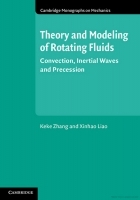Interested in publishing in MECHANIK monthly? We recommend that you review the ethics and guidelines below.
- Multiple Publication
- Originality and Copyrights
- Acknowledgement of Sources
- Authorship of the Paper
- Conflicts of Interest and Disclosure
- Manuscript Preparation and Arrangement
- Reviewing
- Submission Preparation Checklist
- Payment
|
Documents to download |
Manuscripts in English or in Polish language can be submitted by e-mail (mechanik@mechanik.media.pl).
Multiple Publication
Each manuscript must be accompanied by a written declaration that it has not been published elsewhere, that it has not been submitted simultaneously for publication in other magazine, and that all co-authors have read the manuscript and agree to the accuracy of their manuscript. Submitting the same manuscript to more than one magazine concurrently constitutes unethical publishing behavior and is unacceptable for final publications in MECHANIK monthly.
Originality and Copyrights
The authors should ensure that they have written entirely original works, and if the authors have used the work and/or words of others published materials, that these have been appropriately cited or quoted. Author is responsible for securing permission for reproducing any figure, table, or extract from the text of another source. This applies to direct reproduction as well as ‘‘derivative reproduction’’ (where you have created a new figure or table which derives substantially from a copyrighted source). Authors are responsible for obtaining permission to reproduce copyrighted material from other sources and are required to sign an agreement for the transfer of copyright to the publisher. All accepted manuscripts, artwork, and photographs become the property of the publisher.
Acknowledgement of Sources
Proper and well written acknowledgment of the research work of others must always be given. Authors should cite publications that have been influential in determining the nature of the reported work or give details of funding authority and financially assisted / funded project.
A reference list must be included using the following information as a guide. References must be numbered and ordered according to where they are first mentioned in the paper. All references must be complete and accurate. Up to 30% of the references on the list can be own previous publications of the authors.
Authorship of the Paper
Authorship should be limited to those who have made a significant contribution to the conception, design, execution, or interpretation of the reported articles or manuscripts.
All other authors, who have made significant contributions should be listed as co-authors. Where there are others who have participated in certain substantive aspects of the research project, they should be acknowledged or listed as contributors.
The corresponding author should ensure that all appropriate co-authors and no inappropriate co-authors are included on the paper, and that all co-authors have seen and approved the final version of the paper and have agreed to its submission for publication.
Conflicts of Interest and Disclosure
All authors in a manuscript should disclose any financial or other substantive conflict of interest, which might be construed to influence the results or interpretation of their manuscript. All sources of financial support for the project should be disclosed.
Manuscript Preparation and Arrangement
All manuscripts must be prepared according to the following guidelines to be considered for review:
- Electronic text files must be in OpenOffice, Microsoft Word, RTF, or WordPerfect document file format.
- The corresponding author should be clearly indicated when listing the authors’ names and affiliations. Contact details, including email address for each author should be given at the bottom of the manuscript’s front page.
- Each article should be summarized in an abstract of not more than 200 words. Avoid abbreviations, diagrams, and references in the abstract. A maximum of six keywords should be provided after the abstract.
- Figures should be supplied in JPG or TIFF formats. Scales must be shown where appropriate.
- All photos and graphics should be described and correctly numbered.
- All photos and graphics should be prepared for printing (300 dpi).
Reviewing
Article will be checked for the compliance with MECHANIK magazine profile and with requirements stated in Author’s Guidelines section. If the manuscript will not meet the requirements it will be send back to the author.
After qualifying the manuscript as in compliance with journals profile it will be send to two reviewers. Chosen reviewers are specialists in given topic and should guarantee independence of opinion and lack of conflict of interests.
„Double-blind review process” is used.
Authors after receiving a review should correct their manuscript in accordance with reviewers suggestions.
When any author found a significant error or inaccuracy in his/her own published work, it is the author’s obligation to promptly notify the magazine editor or publisher and cooperate with the editor to retract or correct the final draft of manuscript.
Submission Preparation Checklist
As part of the submission process, authors are required to check off their submission's compliance with all of the following items, and submissions may be returned to authors that do not adhere to these guidelines.
The submission has not been previously published, nor is it before another journal for consideration (or an explanation has been provided in Comments to the Editor).
The submission file is in OpenOffice, Microsoft Word, RTF, or WordPerfect document file format.
Where available, URLs for the references have been provided.
All illustrations, figures, and tables are placed within the text at the appropriate points, rather than at the end; all are complete and good quality (300 dpi).
The text adheres to the stylistic and bibliographic requirements outlined in the Author Guidelines.
Payment
Publishing scientific articles in MECHANIK is paid. Invoice is sent after publishing an article. More information available at e-mail: mechanik@mechanik.media.pl



 "Declaration of originality" - PDF file
"Declaration of originality" - PDF file "Declaration of originality" - DOCX file
"Declaration of originality" - DOCX file


















